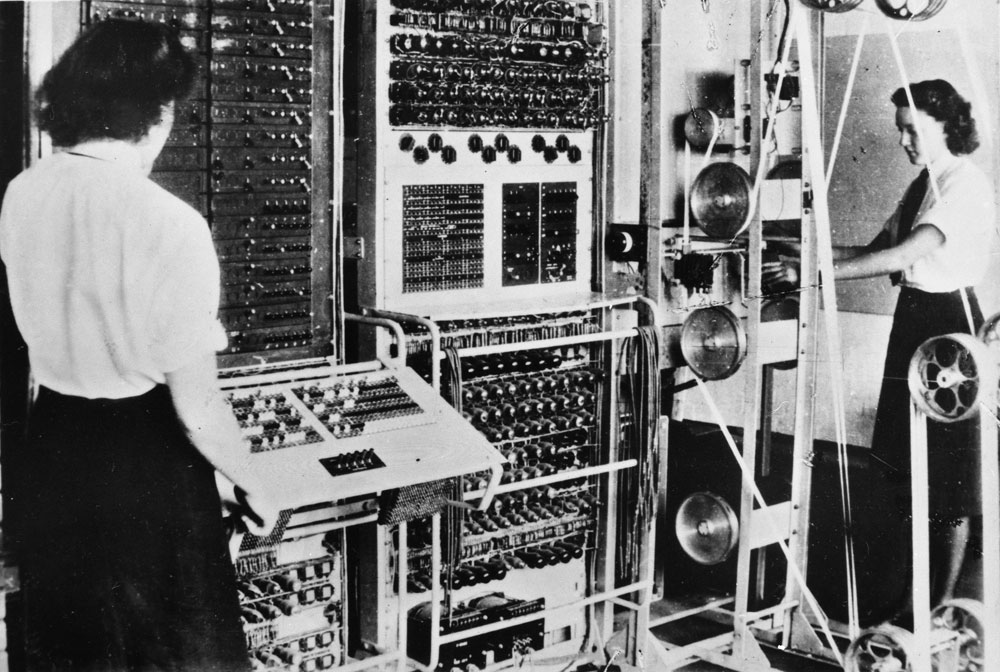
Colossus electronic digital computer, 1943 (Catalogue ref: FO 850/234)
I hope by now that you’re starting to get the idea that The National Archives is a bit of a dark horse when it comes to innovating in technology. We have, as far as I can tell, won more technology awards for more separate projects than anyone in the public sector except for the NHS, and we’re a little smaller. This culminated in a Queen’s Award for Enterprise and Innovation last year for our digital preservation technologies across all sectors and a public sector digital award for legislation.gov.uk. It doesn’t stop there – we also innovate in education, and the physical preservation of our collection, saving a lot of energy in the process.
So I thought it might be interesting to describe my view on our approach. I’ll look at technology, cost, and culture.
First, cost – stay efficient. We’re taking a significant cut of 25% over four years and it’s certainly difficult times for everyone. In my view, that has obliged us to be more thoughtful about how to deliver the things, and more inclined to the use of open/ web-based solutions such as WordPress, of iterative approaches like Agile project management and of social media like this blog.
Second, technology – you need experts. We have, deliberately, kept a small but strong in-house technology resource over the years. The main reason for this is that our technology needs are unusual, especially when you consider digital preservation and archiving at scale with open and closed records. This has not precluded us from working with good partners, from Tesella and TSO, all of our excellent licensing partners, and colleagues in the academic sector. However, we believe that you need to have good people in-house who can make sure that we are all going in the same direction, and manage projects to our high standards.
Third, culture – take risks, but continously improve. My role is quite definitely to stand back, create an environment with the team where real innovators can keep on doing what they do best. However, we are both an archive and civil servants. Some might say that makes us less hungry to take risks. So when it comes to some of our projects we can occasionally spend too much time dotting ‘i’s and crossing ‘t’s. But sometimes, we do make the running, and that’s where the innovation comes in.
I’d argue finally, that all this stems from our devotion to the record – to the information we hold and how we can make it incredibly open and reusable. We love seeing people do great things with our records (like on our hack day), the legislation we supply, and we know that we can’t be the only people who feel that way.